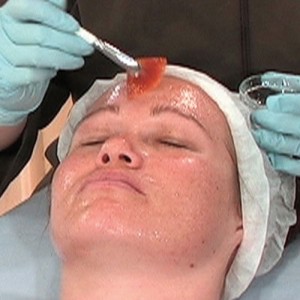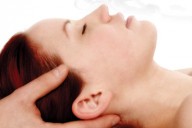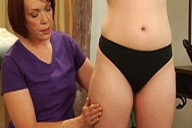No Need for Surgery. The Dramatic Results of Advanced Chemical Peels
0Sun damage. Age Spots. Wrinkles and lines. All reasons that clients are continually looking for ways to improve or revitalize their skin condition with resorting to surgery. Not everyone relishes the idea of facial injections, so they have turned to the highly successful process of advanced chemical peels to radically change the look and feel of their skin.
When a client has come to the decision to consider advanced chemical peels for their skin condition, it is  absolutely vital that you discuss the procedure in full detail. However, your first step will be a full skin workup and history on your client, delving deeply in to daily habits, chronic skin conditions and skin analysis. The skin type result will be vital to determining a direction to follow for the chemical peel.
absolutely vital that you discuss the procedure in full detail. However, your first step will be a full skin workup and history on your client, delving deeply in to daily habits, chronic skin conditions and skin analysis. The skin type result will be vital to determining a direction to follow for the chemical peel.
When assessing a client’s skin type, the key factors related to chemical peels are Fitzpatrick type, (the skin’s ability to produce pigment), Glogau classification (elasticity) as well as the client’s desired results are all vital to choosing the most successful peel application. Once you know these criteria, you can then inform your client of chemical peel processes and options.
Be as detailed as possible when discussing the types of chemical peels, like alpha hydroxy peels or beta hydroxy peels. First-time chemical peel clients’ or those with sensitive skin could be more suited for alpha hydroxy peels, while acne sufferers may benefit more from a beta hydroxy peel.
Microdermabrasion has become a widely popular method of removing layers from the face and neck to reveal healthier, more youthful skin. However, even if your client has used the druggist’s suggested microdermabrasion at home, it is still very important to discuss the overall procedure with them. Find out their expectations for the effects of the procedure and inform them of possible negative issues they may experience as a result of the procedure.
Chemical peels are a strong tool to use for acne treatment, reduction or facial scars, wrinkles and lines or to even out skin-tone for your clients. It is, however, a process that implements chemicals coming into contact with the skin and there is really no guarantee as to a final result. Be sure to get as much detailed information as possible to ensure the most successful treatment for each and every one of your clients.
Aesthetic VideoSource has a new 4 DVD series on Chemical Peel Techniques. Everything from Glycolic Peels to Medical Grade Peels. In these step-by-step education videos, Melinda McHenry shows you the steps for completing a chemical peel including fitzpatrick types. Visit us today and request a free catalog.



